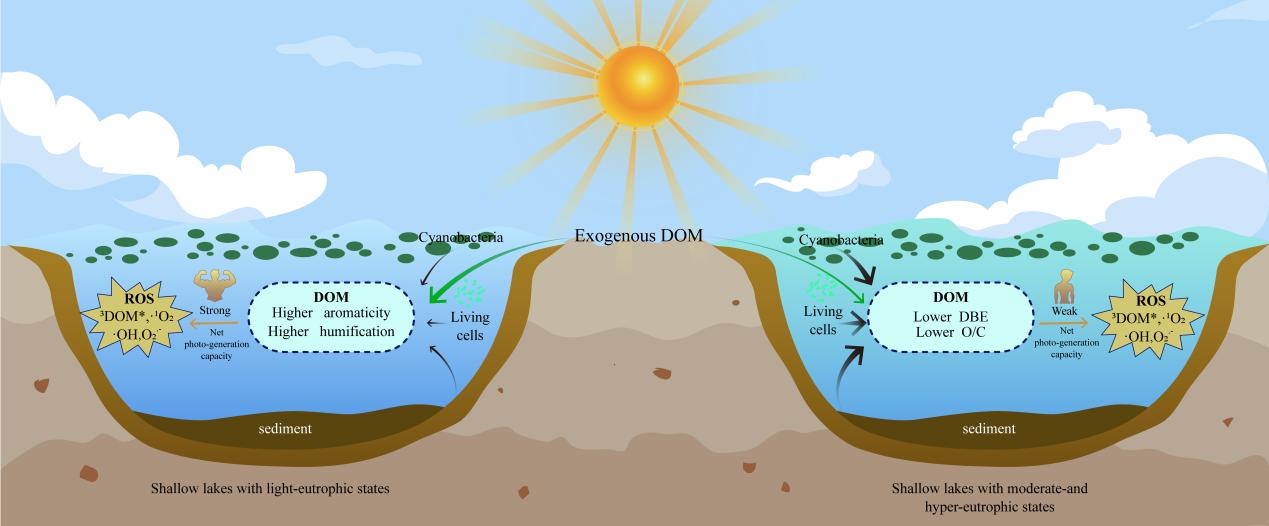
Reactive oxygen species (ROS) are critical drivers of aquatic biogeochemical processes, with dissolved organic matter (DOM) serving as a primary photosensitive source of ROS in natural waters. Despite their importance, the specific characteristics of DOM in shallow lakes across varying trophic states, as well as their net ROS photogeneration potential, remain poorly understood.
A research team from the Wuhan Botanical Garden (WBG) of the Chinese Academy of Sciences has addressed this knowledge gap by characterizing the composition of DOM in seven shallow lakes with distinct trophic gradients. Employing optical and mass spectrometry techniques, the study, published in Water Research, provides new insights into the relationship between DOM composition and ROS photogeneration.
The findings reveal that DOM in these lakes exhibits both endogenous and exogenous characteristics, with endogenous traits becoming more pronounced as the trophic state of the lakes increases. Notably, DOM in light-eutrophic lakes demonstrated a significantly higher capacity for ROS photogeneration compared to moderate-eutrophic and hyper-eutrophic lakes.
Further analysis identified specific DOM compounds, including phenolic and polyphenolic substances such as lignin/CRAM-like structures, aromatic compounds, tannins, and fulvic- and humic-like compounds, as key contributors to ROS photogeneration. Among these, lignin/CRAM-like and aromatic compounds were particularly strongly correlated with enhanced ROS production.
This study provides new insights for assessing the ecological and environmental risks associated with ROS generation in aquatic systems. This work was supported by the National Natural Science Foundation of China, the China Postdoctoral Science Foundation, and several other funding programs.

Source and characterization of dissolved organic matter in shallow lakes with different trophic states and their net photo-generation capacity of reactive oxygen species (Image by WBG)

86-10-68597521 (day)
86-10-68597289 (night)

52 Sanlihe Rd., Xicheng District,
Beijing, China (100864)

